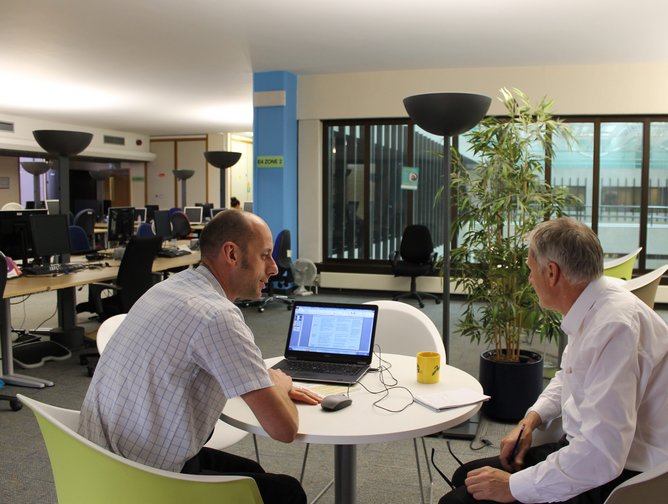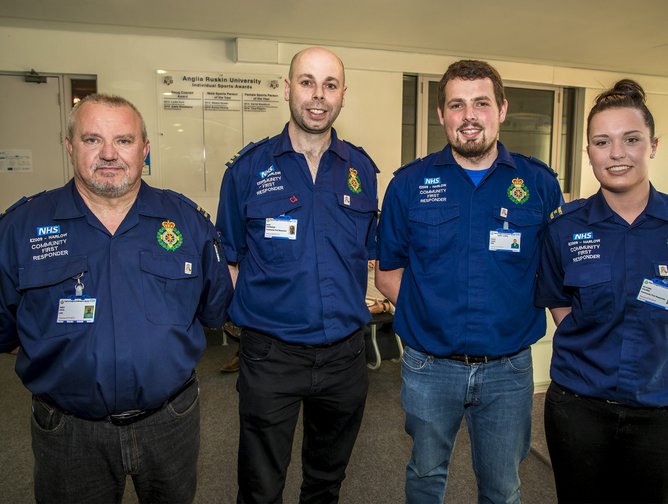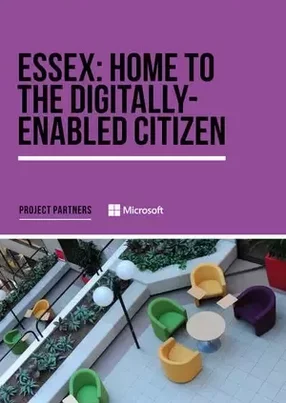How Essex County Council is transforming life in the county with innovative technologies
Bringing about a technological transformation is a challenging feat, but when it aims to streamline public services, drive prosperity in a region, and improve citizens’ lives, you could argue that the pressure increases tenfold.
Essex County Council, in the East of England, has deftly tackled this challenge head-on, setting a country-wide example of how local authorities can use digitisation to enhance their day-to-day operations.
For Jason Kitcat, Executive Director of Corporate Development, digital ways of working will be key to increased efficiency and productivity at the council.
Ultimately, however it’s the end-user, the county’s residents, who matter most.
“Our focus absolutely has to be on the end-user, which in most cases is a citizen of Essex, or a business, or a visitor,” Kitcat says. “Sometimes this might be indirect because the service you're creating may be used by employees in the public services, but at the end of the day the citizen always has to be the focus.”
Governing the county of Essex, the council is striving to deliver lasting change for its communities.
However, it isn’t going to start from scratch; instead, it’s learning from its peers and building on prior projects to offer tried-and-tested solutions.
It is this pragmatic, informed approach which Kitcat believes will be key to the council’s success.
“What makes councils unique is the pride they hold for the area,” Kitcat observes. “We all feel our area is special but that doesn't mean that our technical requirements are really that unique.
“Rather than using customised components, we're working hard to use as many standardised ones as possible so that we can draw, and learn, from what our peers are doing. We don’t want to have ‘not invented here syndrome’ and we're not obsessed with reinventing the wheel.
“We’re trying to build on the shoulders of others,” he says. “We're going to be humble and curious and we believe that by taking a very straightforward approach, focused on the user needs, we can meet the ambitions of our strategy and serve the citizens of Essex.”
This digital journey isn’t about following fleeting trends or spending excessive amounts of money. For Essex County Council, the usage of the technology and how it will impact its residents is what matters.
At this local authority, digital innovation and in-depth research and planning go hand-in-hand to ensure that each digital tool is utilised to its utmost capability.
“To do this we have a service design function and a technology services function and between them this translates to what you might consider our digital agenda,” Kitcat explains.
“The service design function is essentially about learning the users’ needs through research and prototyping to figure out whether a service would benefit from being redesigned or having a digital-first approach. With that in mind, the technology services function is about creating a secure, reliable, and flexible digital infrastructure that enables these new ways of working.”
In the ever-changing tech space, flexibility is needed more than ever. Therefore, instead of opting for monolithic contracts of five or 10 years, the council is shifting towards shorter, more flexible deals.
“Five or 10-year contracts are usually too long because change in the sector is so rapid,” says Kitcat. “This isn’t just in terms of changing demographics and new emerging technologies, we’re also seeing changes in the policy space. When the government makes decisions, it causes significant changes to local government or healthcare, and we need to be able to adapt to that.”
When technologies come and go in the blink of an eye, Kitcat says that collaboration plays a pivotal role in ensuring that the council keeps pace with disruption.
As such, Essex County Council has joined the region’s unitary, borough, and district councils as well as Essex Fire & Rescue and Essex Police, to form the Essex Online Partnership (EOLP).
This close-knit team works together to share knowledge, resources and services to deliver county-wide benefits through joint policies and procurement frameworks.
“Creating an integrated, seamless experience for our users both offline and online is a core goal," explains Kitcat. “Aiming for a shared technological infrastructure is really important because we eliminate duplication and hopefully improve outcomes for citizens. We want to get the job done.
“Geographically, Essex is a really big and complex region and so bringing partners together is very important,” he continues. “Of course, you have extra benefits like gaining efficiencies in procurement but, from my perspective, the most important thing is to improve that way that we engage with citizens and integrate with other services as much as possible.”
A £81mn ($109.9mn) ‘next generation network’ has also helped to modernise Essex County Council’s communication systems for itself and other organisations.
Through this 10-year project, the council and its provider has built unified communications, video conferencing and fixed telephony to allow for flexible networking.
Working alongside Daisy Group and Updata Communications, the network and telephony deal introduced a Public Services Network (PSN) across its 200,000 users, which Essex County Council says will save it £1.2mn ($1.6mn) per year in network costs.
“Essentially, the aim for this project was to deliver cost efficiencies because of the length of the contract,” says Kitcat. “It’s promoting a public-sector collaboration and school connectivity. So, it's a very multifaceted programme.”
On the topic of telecommunications, Kitcat also says that the council has successfully shifted from traditional telephone systems towards voice over IP (VoIP) systems.
It is also championing a more flexible working culture by equipping employees with mobile devices so they can work remotely.
“For most people across the council their only experience of the telephone is through their laptop using Microsoft’s Skype,” says Kitcat. “So far the move to VoIP has been very positively received.
“Then, for a long time, we’ve also championed mobile and flexible working through the use of laptops or handheld devices.
“We’re in the process of rolling out devices for eligible employees or letting them use their own,” he continues. “I think the topic of mobile working and remote devices is a really interesting conversation to be had because it usually highlights the very different usage and needs across a typical council footprint.”
Needing to champion flexibility, security and innovative thinking, Essex County Council has turned its attention to digitisation with notable success.
But how does the local authority meet the demands of a disruptive tech landscape whilst also staying within a council’s ever-tightening budget?
“I think it can be a challenge but at the council we all believe that we can make services more efficient using technology,” says Kitcat. “Demonstrating that can be quite hard, but the theory is if you make the service more user-friendly, efficient, quick and online, you will manage demand better and reduce spending.
“The citizen won’t see this, but in the background our aim is that we ultimately want to move to a standardised cloud-based approach which should simplify our technology estate,” he adds. “We should have simpler but better systems which will save money. On top of that it will also improve productivity and collaboration because if you're using cloud-based tools with standardised APIs, it's much simpler to connect with other partners and public-sector counterparts.”
Part of the remit for Essex County Council’s service design team is working to transform its website. As a citizen’s first port of call, it hopes to make the council easier to access so that citizens can do what they need and then get back to daily life.
“The vision behind all of these investments is that we want our citizens to have a high-quality of life in Essex, one that’s enabled by digital services that are faster, better and cheaper,” Kitcat says.
“Essentially, it's about us being as easily accessed as possible,” Kitcat adds. “People don't wake up in the morning and want to speak to the council. They wake up and they want to do something, whether that’s getting a job, a school place for their child, access to a service, or even getting a pothole fixed. We want to make those services as easy, seamless and effortless as possible.”






